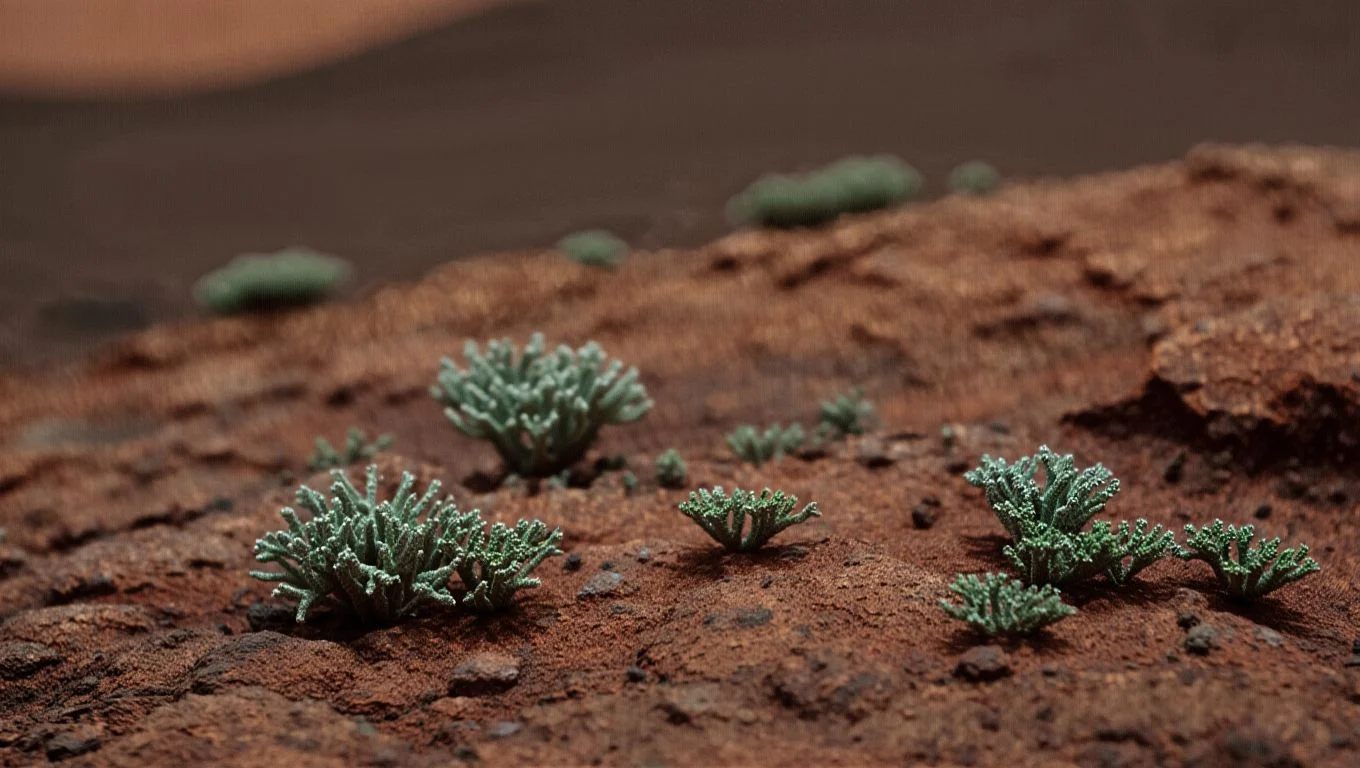- Courses
- GS Full Course 1 Year
- GS Full Course 2 Year
- GS Full Course 3 Year
- GS Full Course Till Selection
- CSAT
- 5 LAYERED ARJUNA Mentorship
- Public Administration Optional
- Online Program
- GS Recorded Course
- NCERT Batch
- Polity Module Course
- Geography Module Course
- Economy Module Course
- AMAC Module Course
- Modern India, Post Independence & World History Module Course
- Environment Module Course
- Governance Module Course
- Science & Tech. Module Course
- International Relations and Internal Security Module Course
- Disaster Management Module Course
- Ethics Module Course
- Essay Module Course
- Current Affairs Module Course
- ABOUT US
- OUR TOPPERS
- TEST SERIES
- FREE STUDY MATERIAL
- VIDEOS
- CONTACT US
Lichens: Resilient Life Forms With Mars Survival Potential
Lichens: Resilient Life Forms With Mars Survival Potential

A recent scientific study has made a fcascinating discovery—certain species of lichens have shown the ability to survive and even remain metabolically active under conditions that closely mimic those found on Mars. This remarkable resilience sheds light not only on their adaptability but also on the potential for life in extreme environments beyond Earth.
What Are Lichens?
Lichens are not a single organism but a symbiotic partnership between two very different life forms:
- A fungus (called the mycobiont) provides structure, stability, and protection.
- An alga or cyanobacterium (the photobiont) performs photosynthesis, producing food that sustains both partners.
This mutually beneficial relationship allows lichens to thrive in conditions that would be hostile to most other organisms.
Global Presence and Habitat
Lichens are incredibly widespread, covering approximately 8% of Earth's land surface. What’s even more remarkable is where they are found:
- From the frozen landscapes of Antarctica to the scorching heat of tropical deserts, lichens survive in some of the planet’s most extreme environments.
- Their presence in such harsh habitats highlights their extreme tolerance to UV radiation, desiccation, and nutrient-poor conditions.
Lichens in India
India is home to a rich diversity of lichens, with over 2,700 recorded species. These are especially abundant in:
- The Western Ghats
- The Eastern Himalayas
- The Northeastern hill regions
In recognition of their ecological importance and diversity, India’s first dedicated Lichen Park was set up in 2020 in Munsiyari, Uttarakhand, marking a step forward in conservation and awareness.
Ecological Significance of Lichens
Lichens play several critical roles in natural ecosystems:
- Bioindicators of Air Quality: They are highly sensitive to pollutants like sulfur dioxide (SO₂) and heavy metals, making them effective indicators of air pollution levels.
- Pioneers of Ecological Succession
- Lichens are often the first organisms to colonize barren surfaces like rocks, volcanic lava, or glacial moraines.
- Over time, they help break down these surfaces, contributing to the formation of soil.
- Soil Formation and Ecosystem Recovery: By breaking down rock and accumulating organic matter, lichens help prepare the ground for more complex plant life.
Lichens and the Possibility of Life on Mars
The ability of some lichen species to stay active in Mars-like conditions has huge implications:
- It opens doors to astrobiology research, hinting that life could potentially survive on other planets under specific conditions.
Their resilience to radiation, low pressure, and extreme dryness makes them prime candidates for studying the limits of life beyond Earth.
|
Also Read |
|
| FREE NIOS Books | |



